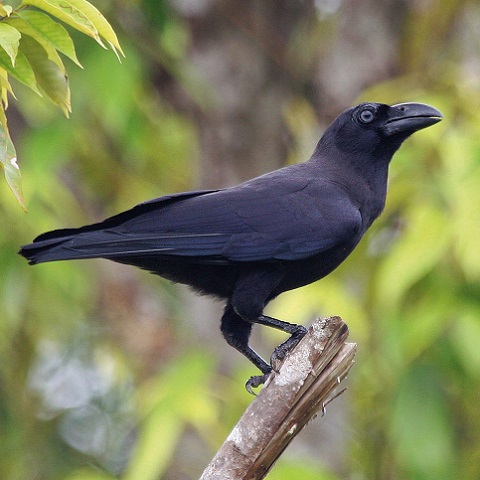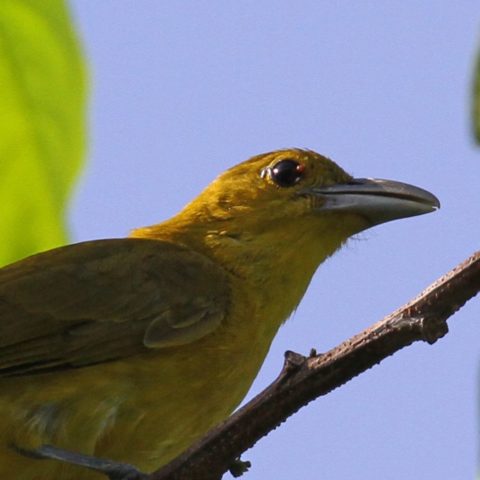Conservation Actions
Conservation Actions UnderwayCITES Appendix I. It occurs in several protected areas, including at least 10 nature reserves in Viet Nam, at least two designated and two proposed National Biodiversity Conservation Areas in Laos. Anti-snaring patrols operate in several protected areas in Viet Nam (Gray et al. 2018). Taxonomic relationships between this species and R. nigrescens have been investigated resulting the separation of the two as distinct species with separate conservation requirements (Davison et al. 2020).Conservation Actions Proposed
Regularly monitor selected populations in Laos and Viet Nam by repeating the Bayesian occupancy model as published by Gray et al. (2014). Promote strict enforcement of hunting regulations in protected areas supporting populations, in combination with locally-targeted conservation awareness initiatives. Survey suitable habitat in Laos and Viet Nam to clarify its current distribution and assess its abundance.
Location Information
Rheinardia ocellata is found along the Annamite mountain chain in central and southern Viet Nam and neighbouring eastern Laos, between the Nghe An province and the Da Lat Plateau in southern Viet Nam. Previously it was readily recorded within forest in this range, but the impact of intensive snaring has depleted populations severely such that it is now absent or close to extinction at previously occupied sites.Geographic Range
Extant
Lao People's Democratic Republic, Viet Nam
Population Information
A preliminary population size was created based on reported densities and likely occupancy of the mapped range, and was considered to fall in the band 10,000-19,999 individuals. However, given the exceptional levels of hunting reported in the range of the species, it is highly unlikely that an estimate derived from habitat area remains meaningful. Although the extent of the range is still large, it is strongly suspected that the population is considerably depleted (J. W. Duckworth in litt. 2018).The population is believed to have declined and to still be declining extremely rapidly (J. W. Duckworth in litt. 2018, C. R. Robson in litt. 2020, R. Timmins in litt. 2021) though only the initial baseline for future work to quantify rates of reduction has been carried out (Gray et al. 2014). Possible extirpation has been reported from Ke Go National Park (Le Trong Trai in litt. 2018) and Dakrong Nature Reserve (references in Vu & Tran 2020). Occupancy modelling of camera-trap data strongly points to considerably depleted or potentially even extirpated populations in some forested areas but there remains frustratingly little quantification of the likely rate of reduction. However, Vu & Tran (2020) mention recent occupancy probabilities for a variety of sites based on 2016 data, including an average of 0.06-0.34 across three sites where the species was previously abundant; Bach Ma National Park, Quang Nam Saola Nature Reserve, and the Hue Saola Nature Reserve. This contrasts with an occupancy estimate of 0.68 ± SE 0.05 for these same sites surveyed in 2012 (Gray et al. 2014), coinciding with the sudden cessation of regular reports from Bach Ma National Park (Liang et al. 2018, Davison et al. 2020). Bach Ma was known as a location where the species was common (Robson et al. 1993), yet appears to have effectively disappeared within the past decade. This concurs with the concern voiced for all mid- to large-bodied vertebrates occurring in this region (Harrison et al. 2016, R. Timmins in litt. 2017, Gray et al. 2018, J. W. Duckworth in litt. 2018), with sympatric ground-dwelling species such as Owston's Civet Chtotogale owstoni and Large-antlered Muntjac Muntiacus vuquangensis assessed as at very or extremely high risk of extinction (Timmins et al. 2016a,b).
A further line of evidence comes from market inventories in Laos, where an intensive investigation in 2015-2016 did not record the species in 48 observation days despite regular records from the same markets in the late 1990s (Xayyasith et al. 2020). Currently, areas in the southern Annamites are believed to be suffering this wave of trapping and this is likely the site of the most rapid declines at present (R. Timmins in litt. 2021). This is also the last area believed to have not already suffered in this last wave of trapping.
Populations persist in protected areas where trapping pressure is currently lower, such as Song Thanh Nature Reserve (Vu & Tran 2020), Phong Dien Nature Reserve (USAID/WWF-Vietnam 2018), Bac Huong Hoa Nature Reserve (L.T. Trai in litt. 2018), at least parts of the Ngoc Linh Nature Reserve (Thinh et al. 2017) and in the Khe Nuoc Trong Forest (Manh et al. 2018, D.L. Yong & L.T. Trai in litt. 2018), as well as the Khoun Xe Nong Ma Protected Area in Laos (Mayer 2017). At each of these sites trapping is thought to have dramatically lowered densities (likely to 10% of former abundance: R. Timmins in litt. 2021), and with no effective approach to curtailing unsustainable trapping implemented in the region (Harrison et al. 2016, Gray et al. 2018) trapping intensity is very likely to increase again as other areas are depleted (J. W. Duckworth in litt. 2018, R. Timmins in litt. 2021).
Given how recently the species was described as common, and not a cause for concern (Brickle et al. 2008), the current situation strongly indicates that an extremely rapid reduction has recently taken place, and which is strongly suspected to have exceeded 80% in the past three-generations (R. Timmins & J. W. Duckworth in litt. 2021).
Threats
The most serious threat to the species stems from high levels of hunting, mostly via the use of snares. The species is hunted mainly for its meat, but also for the pet trade (McGowan and Kirwan 2020). Especially in the lowland forests throughout Viet Nam and Laos, snaring has intensified tremendously since the early 2000s (Harrison et al. 2016, Gray et al. 2018, J.W. Duckworth in litt. 2018, R. Timmins in litt. 2021). There are no effective measures in place to reduce the level of snaring within the species's range (Gray et al. 2018, J.W. Duckworth in litt. 2018), hence the population decline is very likely to continue.The rate of forest cover loss within the range of the species is increasing (Global Forest Watch 2021). Over the past three generations (2003-2020) forest cover loss totals 11.5% at an annual average of 0.59%, however the most recent 5-year mean annual rate is 1.26-1.28% (based on 2000/2010 forest cover areas: data from Global Forest Watch 2021). If this rate continues, over the three generation period from 2016 to 2033 forest loss within the range of the species would total 21.4%. This is sufficient to be driving a moderate population reduction in itself, but the larger issue is that this forest cover loss correlates with increased access to remaining forest and consequently extent of trapping.






